The camellia is the queen of winter, unrivaled for glamour, yet she is down to earth, easy to manage and long-lived.
Graham Ross has the details.
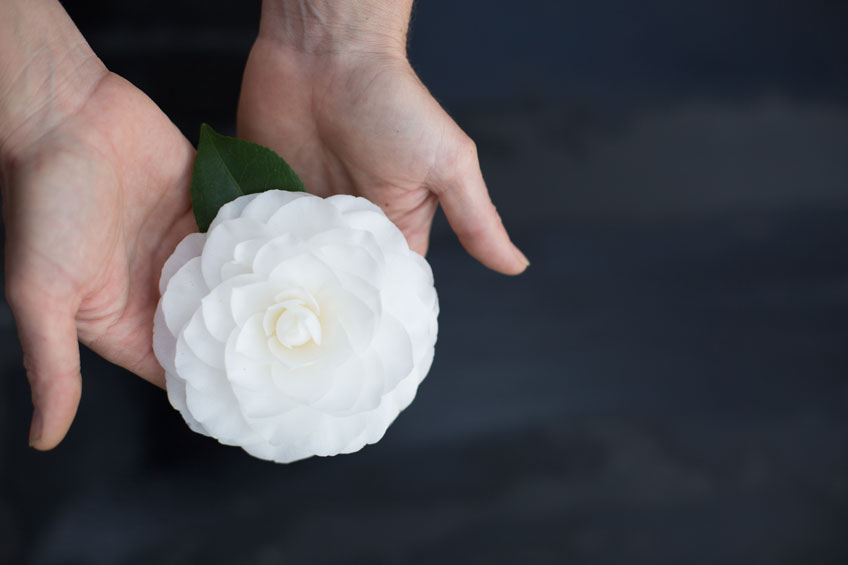
Photo - Hannah MacCowatt
Camellia japonica arrived in the western world from the Orient in 1826 and was received with tremendous enthusiasm. New cultivars were bred to
look like huge satin bows, extravagant and completely over the top. They were named for princesses, countesses, the rich and the famous. In 1848 Alexandre
Dumas published his novel, Lady of the Camellias, about a beautiful courtesan dying of tuberculosis (which subsequently became a play and an opera,
called La Traviata), ensuring the enduring romance of the camellia.
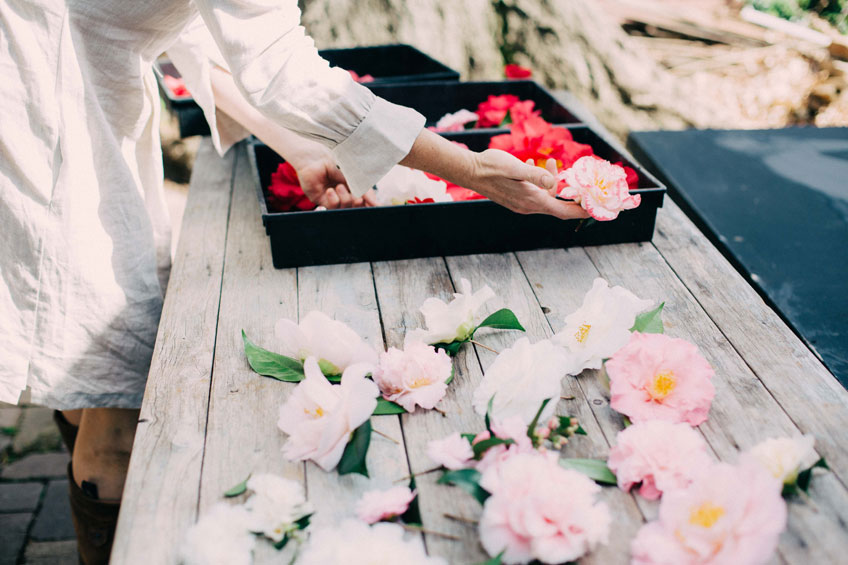
Photo - Hannah MacCowatt
It is thought that the oldest living camellia in Australia dates back to 1831. It was part of a consignment of plants which arrived in a case on the ship
Sovereign for Elizabeth Macarthur of Camden Park. One of this collection, ‘Anemoniflora’, is still growing happily in the gardens, and her
son William is said to have produced the first Australian camellia cultivar, the stunning white ‘Aspasia Macarthur’. However, recent investigations
reveal an even earlier camellia shipment from London.
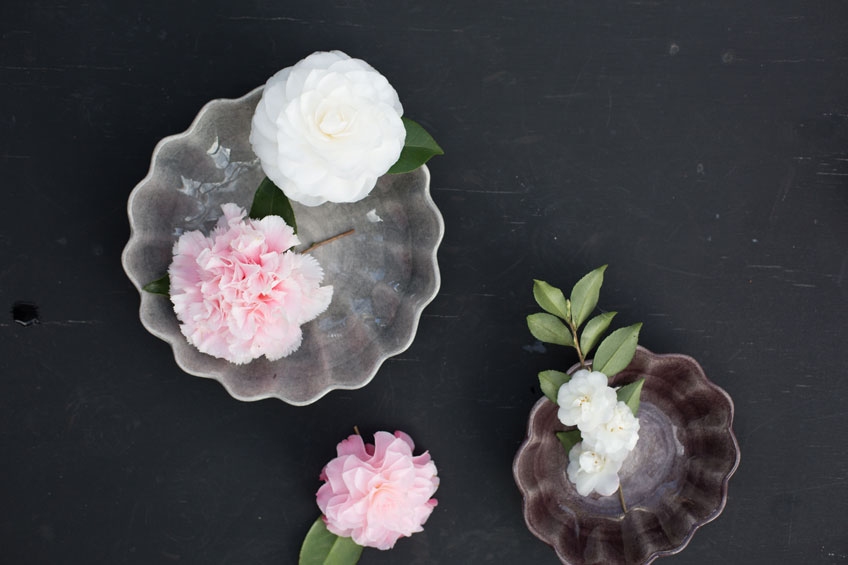
Photo - Hannah MacCowatt
Few plants have been hybridised and developed to the extent of camellias. Expert growers say there are more than 30,000 cultivars in existence, and everyone
has their own favourite.
Camellia japonica grows into a classic small tree that prefers dappled light, including that found under gums. They grow from subtropical Brisbane
to the frosty hills of Tasmania and flower from April to October, depending on the variety. Your local nursery can help select cultivars that will
thrive in your area. If you live in a warm temperate climate avoid the late-season bloomers as very warm weather in September and October will scorch
the petals.
Vain by looks but versatile by nature, camellias may be hedged, lollipopped, trained into a decorative espalier, bonsaied, potted or even planted in a
hanging basket. You can also move them to another part of the garden if they are in the wrong spot. This is best done in winter. First remove all the
buds and flowers, then transplant into the new position, taking as big a rootball as possible, and water with seaweed solution to help the camellia
settle in. Spraying with Droughtshield before lifting can also help leaves retains moisture.
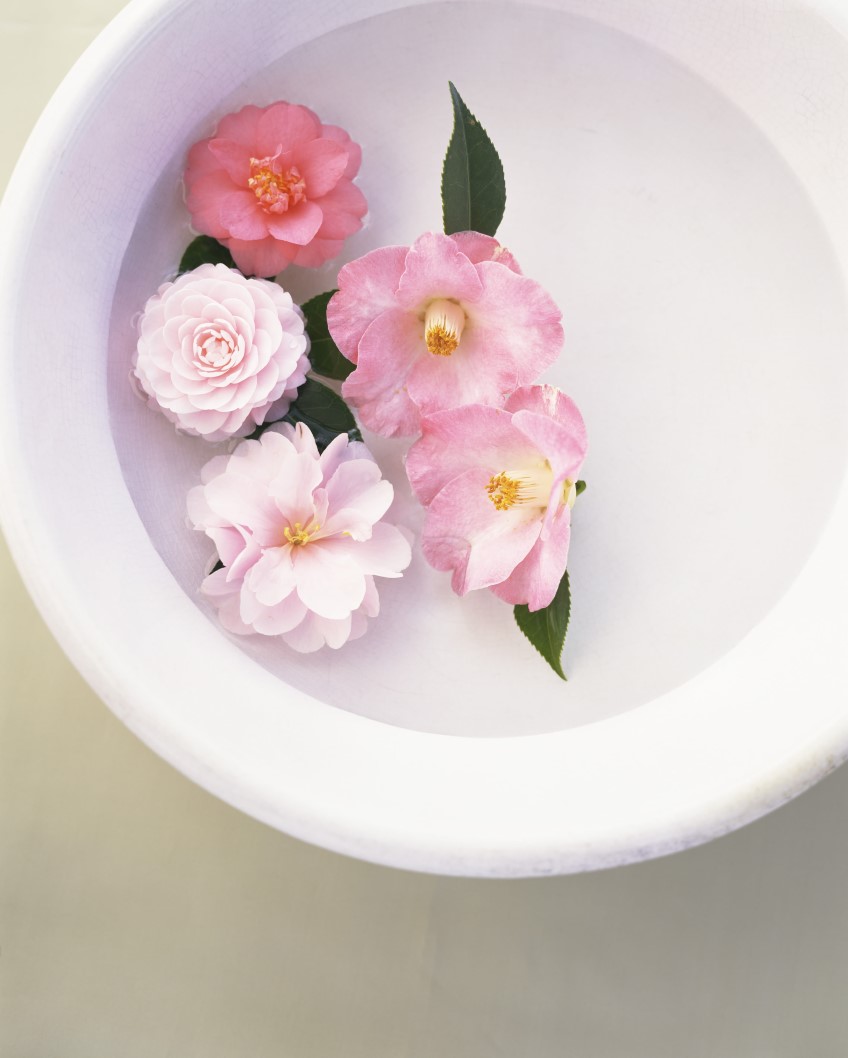
Cut camellia flowers are best displayed in simple float bowls. Photo - photolibrary.com
Growing tips
Protect the shallow root zone with a thick mulch of organic matter such as milled cow manure and fallen leaves.
Encourage bigger flowers by liquid feeding in autumn with Thrive for Flowers or Phostrogen.
Never let camellias dry out, especially during summer - a drip irrigation system will keep them happy.
Prevent root rot fungus by spraying once a year with Antirot.
Dis-bud early in autumn by removing the third and fourth flower buds in each cluster.
Take cuttings in late summer.
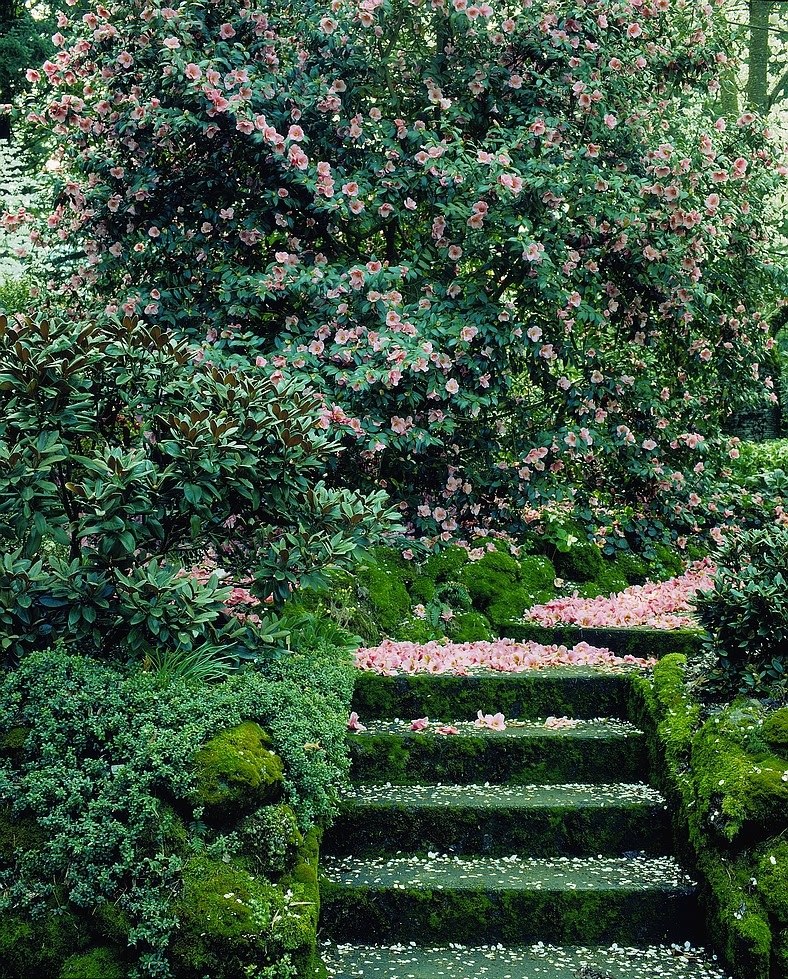
Semi doubles. Photo - photolibrary.com
Flower types
Camellia flowers can be divided into six bloom types:
Single: One row of petals with no more than eight petals curve back to show off a pillar of visible stamens eg. Tama-No-Ura
Semi-double: Two rows of petals gently overlap showing a boss of visible stamens. eg. Lovelight
Formal double: A perfect spiral is created with several layers of overlapping petals with a central cone of furled petals arranged symmetrically
never showing stamens eg. Desire
Anenome: One or more layers of outer petals ring a central mass of frilled petals with some stamens eg. Dona Herzilia de Freitas Magalhaes
Peony or Informal double: Raised petals hide a mass of twisted petals and stamens. eg Margaret Davis
Rose: Several layers of overlapping petals open to show off the central stamens eg Guilio Nuccio
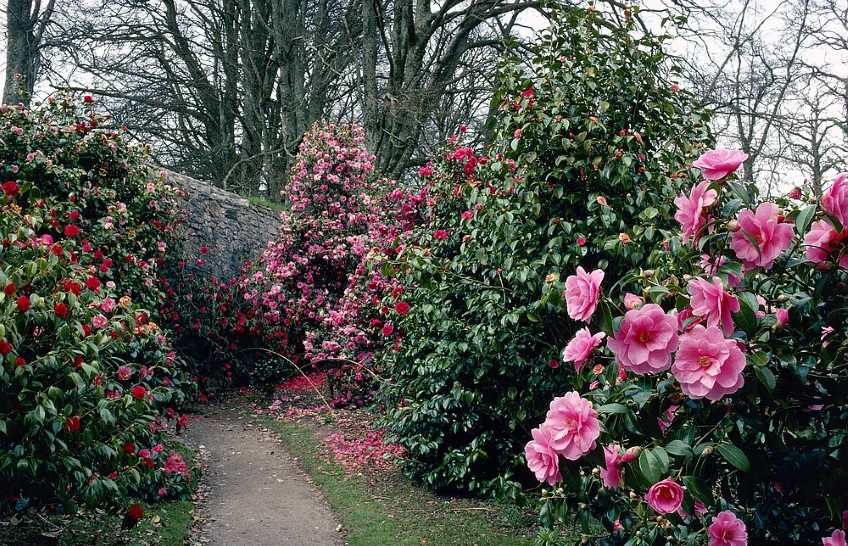
Japonicas grow into small trees. Photo - photolibrary.com
Our Favourites
What Camellia is That? is a definitive encyclopedia written by the late Stirling Macoboy that has everything you need to know about
growing camellias.
‘Lovelight’ flowers mid-season with pure crepe petals and gold-tipped stamens.
‘Nonie Hayden’ has a peony form that flower mid to late season, fast grower.
‘Silver Chalice' has exceptional silver white peony form flowers in mid season.
‘Guilio Nuccio’, much celebrated Californian cultivar, flowers early to mid season.
‘Royal Velvet’ is sun hardy, upright and compact, ruby red flower, mid season.
‘Betty Ridley' is a sun hardy formal double flowering early to late.
‘Dixie Knight’ flowers mid season and is good in pots.
‘L.T.Dees’ has enormous formal double petals and flowers mid to late season.
‘Nuccio’s Gem’ is a very popular, perfect white-spiralled flower, early to mid season.
‘Desire’ by name and by nature, a popular formal double, flowering early to mid.
‘Waltz Time' is a medium grower with mid to late season flowers.
‘Buttons and Bows’ with fluted petals that flower early to mid season.
‘Debutante’ peony form, mother to Desire, flowers early to mid season.
‘Tiptoe' bred at Camellia grove, is sun hardy with semi double flowers in mid season.
‘Dona Herzilia de Freitas Magalhaes' purple petals in a distinct anemone form, mid season.
‘Great Eastern’ is an old favouite and the most full-sun-hardy of all
Perfume:
The majority of camellias are not fragrant but there are notable exceptions: Scentuous, Kot No Kaori, High Fragrance, Spring Mist and Sweet Emily Kate.
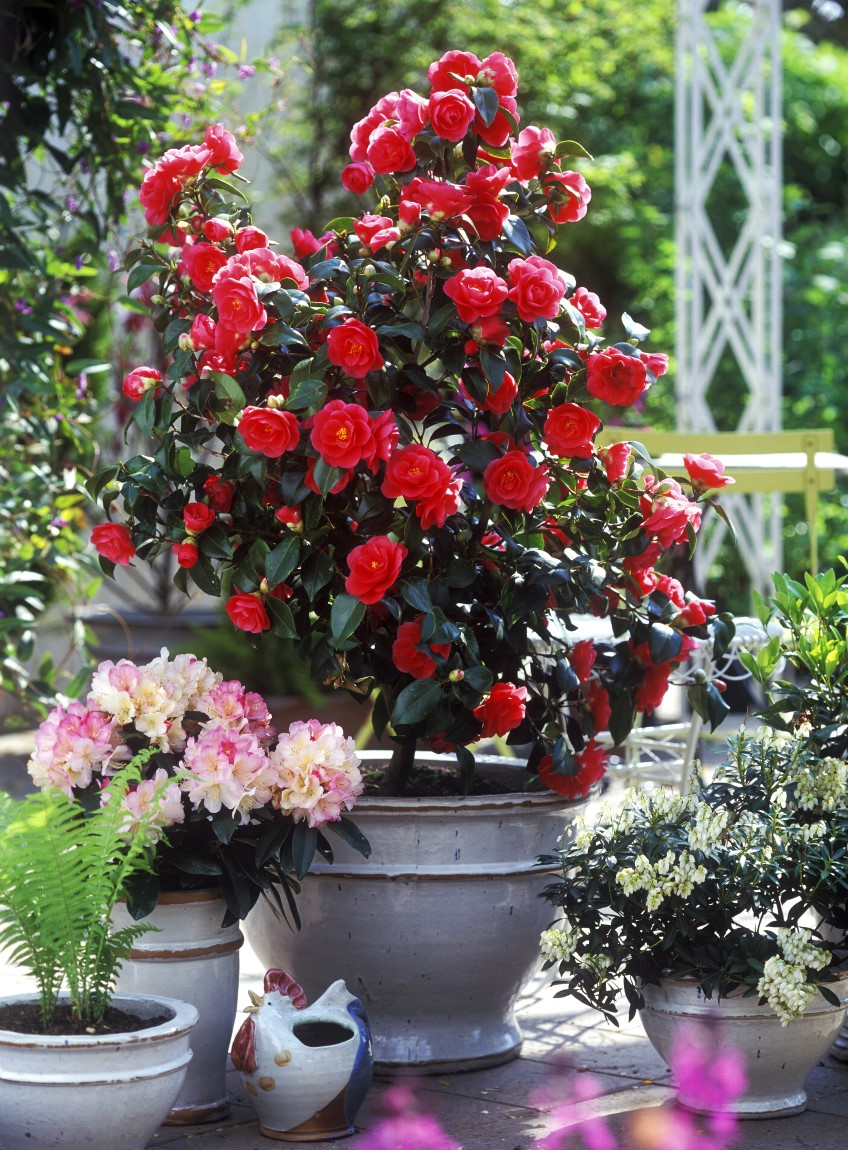
Potted garden: Camellia 'Flame' and Rhododendron yakusimanum grow happily in containers if given thick mulch, regular water over summer and a slow release feed in spring. Short, wide tubs best accommodate their shallow root systems. Photo - photolibrary.com
Trouble-shooting
Sunburnt leaves
A common problem in drought-affected areas in Victoria and western towns in NSW. Don’t remove leaves, let them drop naturally. Keep roots moist and mulch
well. Consider spraying leaves with Droughtshield next summer to protect against heatwaves.
Leaf-gall
This fungus is becoming increasingly common on spring growth. It spreads by bursting spores from a gall on the the undersides of leaves. There is no chemical
control: prune off infected leaves and dispose in the bin. Wipe secateurs blades with metho after pruning.
Two-spotted mites (Ribbed Tea Mite)
This pest is becoming very common in dry, warm gardens, especially those that are drought-affected. They produce grey streaks or stains either side of
the mid-rib of leaves between November and March. Control is necessary to prevent the pest disfiguring the leaves. Water foliage to keep leaves moist,
spray with Eco Oil or PestOil during summer or spray with Natrasoap early in summer.
Aphids
Aphids are usually most damaging during spring when they feast on new growth, leaving foliage twisted and reduced in size. They need to be removed as they
can lead to sooty black mould fungus. Control with either pyrethrum sprays, Confidor, MaxGuard or Conquer. Oil sprays will also deter aphids if used
regularly.
Scale
Several scales are also being experienced more frequently on camellia and must be controlled to avoid yellowing leaves, scaly damage to both leaf surfaces,
disfigured foliage and sooty mould appearing. Control with Eco Oil, PestOil or Eco Neem.
Disbudding
Camellias will often produce too many flowers resulting in stunted and twisted blooms. It may be necessary to prune off some of the flower buds to allow
more energy to go into the remaining buds for bigger blooms.
Transplant?
They move easily if they are in the wrong spot. This is best done in winter. First remove all the buds and flowers, then transplant into the new position,
taking as big a root ball as possible, and water with seaweed solution to help the camellia settle in. Spraying with Droughtshield or Eco-Guard before
lifting can also help leaves retains moisture.
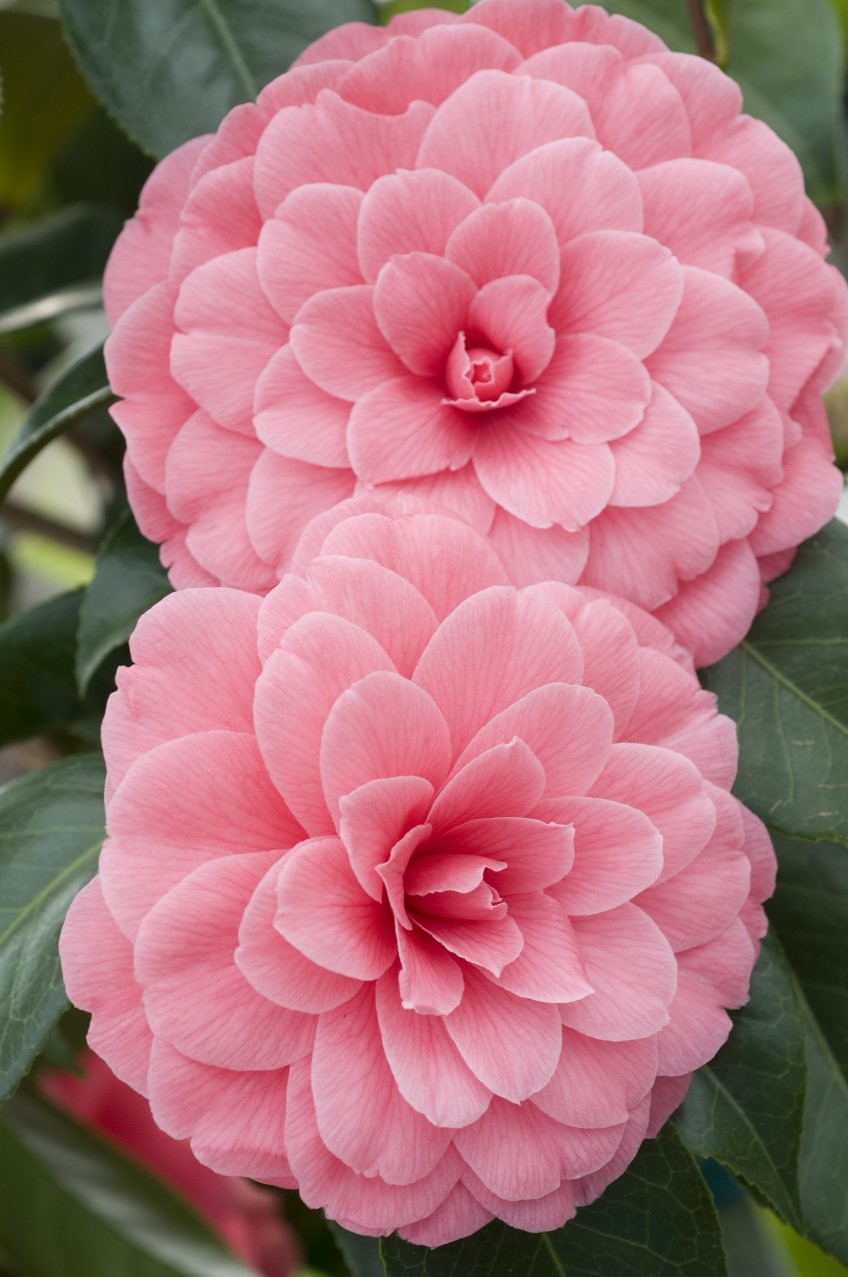
We love these formal double types. Photo - photolibrary.com
Where to buy
Camellia Grove Nursery
8 Cattai Ridge Road, Glenorie, NSW, 2157
(02) 9652 1200 www.camelliagrove.com.au
Camellia Lodge Nursery
310 Princess Hwy, Officer, VIC 3809
(03) 5943 2500
Yamina Rare Plants
25 Moores Road, Monbulk, VIC, 3793
(03) 9756 6335
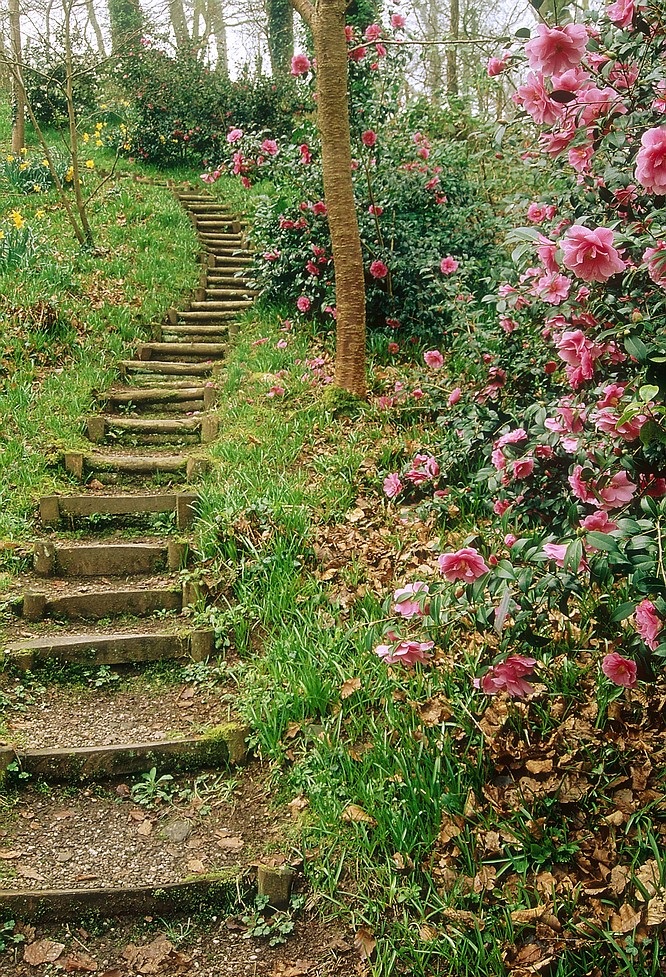
Create a winter woodland with shade loving camellias. Photo - photolibrary.com
Where to see?
See wonderful garden camellias in full bloom at historic home Eryldene, home of the late Professor Waterhouse who pioneered the introduction of camellias
and worked to raise their profile. Open throughout winter for details go to www.eryldene.org.au
Teatime
You may be brewing up a pot of Camellia right now. Did you know that the tender leaves of Camellia sinensis are grown in plantations, picked,
dried then sold as tea? The Chinese have been drinking tea since the third millennium BC. Visitors to China and Japan can watch the tea ceremony where
green tea (C. sinensis var. sinensis) is steamed, rolled and dried. Tea camellias arrived in Europe in the 17th century but due
to the language difficulty ornamental camellias were included. These became treasured garden plants picked to adorn the hats at Royal Ascot.